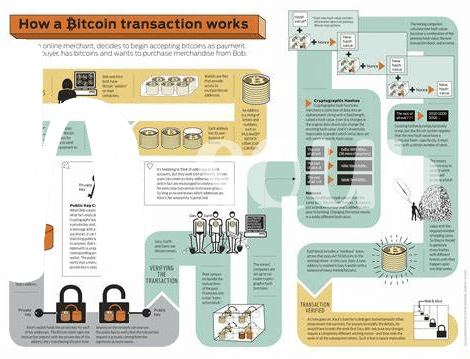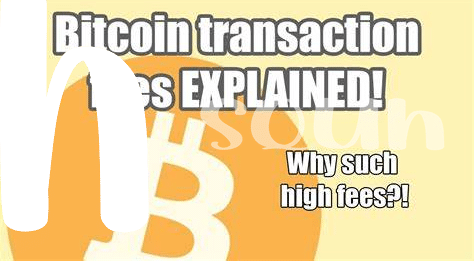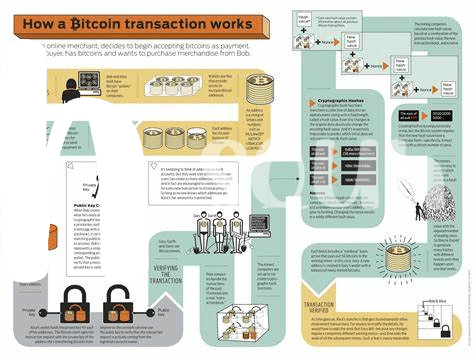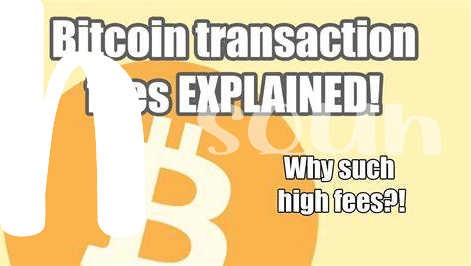What Are Miner Fees and Why Pay Them? 💰

Imagine you’re at a café using a special digital wallet to pay for your coffee with Bitcoin. Now, the barista doesn’t send your coffee through cyberspace. Instead, what moves is the digital information that represents the money’s flow. Here’s where the concept of miner fees comes into play, acting very much like a tip to the Internet’s digital waiters who serve your transaction on the network’s table. These miners use powerful computers to confirm your transaction, securely adding it to the Bitcoin ledger, known as the blockchain. Without this incentive, miners might not prioritize verifying your transaction, leading to delays. Simply put, paying a miner fee is like ensuring your coffee arrives hot, securing a spot in the blockchain queue. It’s a tiny price for a speedy and secure transaction, guaranteeing your Bitcoin payment lands swiftly and safely. Plus, it keeps the whole Bitcoin ecosystem running smoothly, much like how tips encourage good service in cafes.
| Coffee Order | Miner Fee (Digital Tip) | Transaction Speed |
|---|---|---|
| Espresso | Low | Slower |
| Double Espresso | Medium | Medium Speed |
| Specialty Coffee | High | Fast |
Decoding How Bitcoin Miner Fees Work 🧩
Imagine you’re at a cafe, waiting in line to order your favorite coffee. The faster you want your coffee, the more you tip the barista, catching their attention to prioritize your order. That’s a bit like how miner fees in Bitcoin transactions work. Bitcoin miners are like baristas of the digital world. They process transactions, securing and updating the blockchain, a public ledger that records all transactions. However, this process requires computational power and electricity, hence the need for a fee as an incentive. When you make a Bitcoin transaction, you can set a miner fee. A higher fee means miners are more likely to pick up your transaction and process it quickly because it’s more rewarding for them. On days when many people are making transactions, like a busy day at the cafe, the network gets congested. Think of it as a longer line at the cafe. During such times, you might decide to pay a higher fee to get your transaction processed faster, similar to tipping more to get your coffee sooner. To better understand how to navigate these digital transactions and avoid unnecessary risks, especially in a landscape where micropayments are becoming more common, checking out insightful resources, such as https://wikicrypto.news/navigating-micropayment-risks-in-the-cryptocurrency-landscape, can be incredibly helpful.
The Role of Miner Fees in Transaction Speed 🚀

When you send Bitcoin to someone, imagine it’s like getting on a bus. Everyone wants a good seat (or in this case, a quick transaction), but those in a hurry might pay a bit more to jump ahead in line. That’s essentially what miner fees do. They’re like a tip to the bus driver, encouraging them to take you where you want to go faster. When the network is busy, having a higher fee can make a significant difference in how quickly your transaction gets processed.
Now, think of the Bitcoin network as that bus on a busy day. If there are lots of people trying to get on (or lots of transactions waiting to be confirmed), the bus can only take so many people at once. Those who’ve paid a higher fare (or miner fee) get priority. This is why sometimes, paying a bit more can speed things up, especially during peak times. It’s all about finding that sweet spot – not paying too much but just enough to get your transaction through without a long wait. 🚀💰🔍
How to Decide the Right Fee for Your Transaction 🔍

Deciding on the right fee for your Bitcoin transaction can feel a bit like choosing the right gear when driving uphill. You want to make sure you’re investing enough so that your transaction reaches the top (gets confirmed) without burning too much fuel (spending too much on fees). Think of the Bitcoin network as a busy highway. The more people trying to make transactions at the same time, the more congested this highway gets. Here, miners are like toll operators, prioritizing vehicles (transactions) that pay higher tolls (fees). However, paying too much might not be necessary if the road ahead is clear. Tools and websites exist that recommend fees based on current network activity, helping you balance speed and cost effectively. Like planning a trip during off-peak hours, sending transactions when the network is less busy could save on fees.
Paying attention to bitcoin and defi ecosystems security concerns is also crucial while navigating these financial highways. Sometimes, it’s about more than just getting there fast; it’s also about moving safely. By keeping an eye on the network congestion and recommended fees, you can optimize your transaction’s journey. If the network is crammed, like during a holiday season rush, you might have to chip in a bit more to skip the line. Conversely, during quiet times, you can save by lowering your fee bid. Using this method, crossing the Bitcoin landscape becomes less of a guessing game and more of a strategic move. Remember, getting your transaction confirmed is important, but there’s no need to overspend when a bit of timing and research can find you a better deal. 🕵️♂️💼📊
Tips to Minimize Bitcoin Transaction Fees 💡
Imagine you’re at a bustling marketplace where the speed of getting your purchase depends on how much you’re willing to tip the seller. In the world of Bitcoin, this tip is akin to transaction fees, and knowing how to cleverly adjust this can mean saving a fair bit of digital cash. One smart move is to avoid sending transactions when the market is busy; think of it as shopping during off-peak hours. Also, using tools like Bitcoin fee estimators can be likened to having a savvy shopping assistant who tells you the best time to make your move. Additionally, integrating SegWit addresses into your transactions is like choosing the express checkout line, making everything cheaper and faster. Here’s a quick rundown of these tips:
| Tip | Description |
|---|---|
| Avoid Busy Times | Transact during off-peak hours to reduce fees. |
| Use Fee Estimators | Tools that recommend a fee based on current network conditions. |
| Adopt SegWit Addresses | Use SegWit for cheaper and faster transactions. |
Implementing these strategies doesn’t just save on costs; it turns you into a savvy user navigating the bustling marketplace of Bitcoin transactions with ease.
Understanding the Impact of Network Congestion on Fees 🚦

Imagine you’re on a highway where the flow of cars represents Bitcoin transactions waiting to be confirmed. Now, think of miner fees as the toll booths on this highway. During rush hour, or when lots of transactions are happening, the highway gets congested. Just like in real life, when there’s too much traffic, you might choose to pay a higher toll to take the express lane and avoid the congestion, ensuring you reach your destination faster. In the Bitcoin network, when it’s busier, users can opt to pay higher miner fees to make their transactions more attractive to miners, who prioritize them for quicker confirmation. This phenomenon highlights a critical balance between demand and network capacity, directly impacting how much you pay in fees. For those diving deeper into how these dynamics affect your digital wallet, considering bitcoin technical analysis security concerns is crucial, offering insights into safely navigating the bustling crypto expressways.
